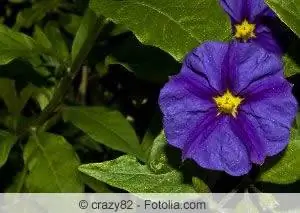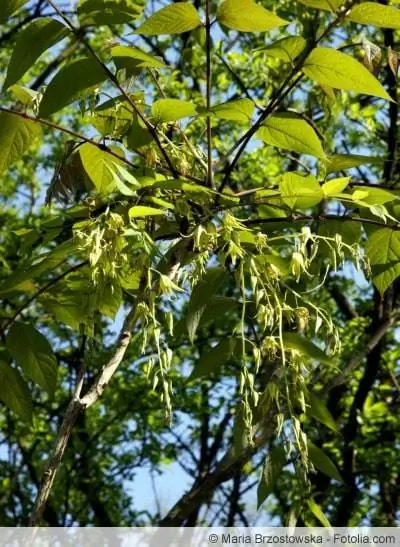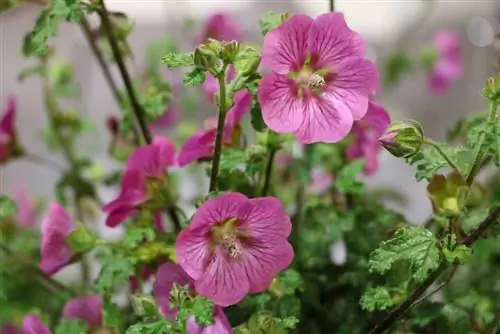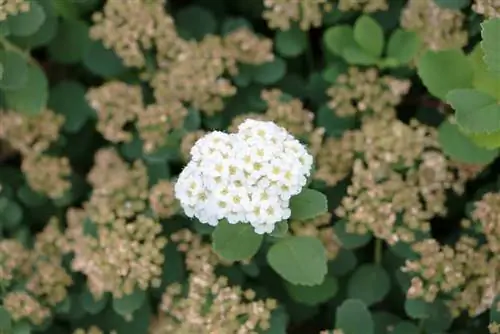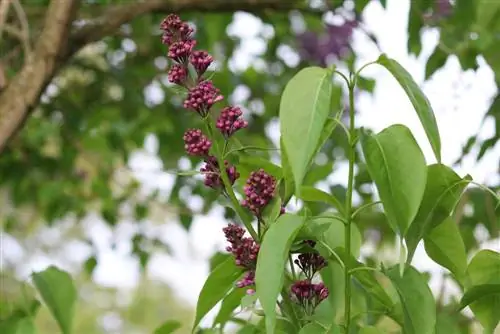- Author admin [email protected].
- Public 2023-12-17 03:39.
- Last modified 2025-01-24 12:45.
The gentian bush has high demands on its owner. If these are met, it shows this with a lush, blue flower. Unfortunately, it is not that easy to care for, but with a little skill and the right location, it will be grateful for it year after year. Since the Solanum rantonnetii is not hardy, it must be protected before the first frost. The plant is originally native to warm South America, where there are neither cold winds nor frosty days.
Location
The perfect location for the gentian bush is sunny and protected from the wind. Since it is ideally cultivated in a bucket due to its lack of winter hardiness in these latitudes, it can be moved regularly. In summer, a corner on a house wall that faces south is ideal. So the Solanum rantonnetii receives the sun it needs, but at the same time it is protected from the wind. But you should also pay attention to too much shade spread throughout the day. Since the gentian bush can reach a height of four meters, the pot is also the better choice here, as the bush does not spread so easily and only reaches a lower height due to the space available.
Tip:
Since all parts of the gentian bush are poisonous to humans and animals, it should be placed in a place where neither small children nor dogs and cats living in the household can reach without supervision.
Substrate & Soil
The gentian bush is also picky about the substrate used. The soil used should therefore have the following properties:
- calcareous
- rich in humus and nutrients
- moisture-retaining but still permeable
- Pail or garden soil from the shops is ideal
- enrich soil with compost or coconut fiber before planting
Pouring
Watering the gentian bush is the be-all and end-all of its care. Because the following must be taken into account when watering:
-

The soil requirements of the gentian bush must be taken into account Water not too cold
- Do not use hard water, it is better to use rainwater from the barrel or filtered tap water
- pay attention to waterlogging
- Roots must never dry out, but must also not be exposed to constant moisture
- the top layer of soil should be a little dry before watering the plant again
Tip:
Ideally, the gentian bush is lightly watered twice a week. Washing the plant every two weeks is not a good solution here.
Fertilize
The Solanum rantonnetii needs a lot of nutrients to develop its lush flowers. Therefore, fertilization should be done as follows:
- Use liquid complete fertilizers for flowering plants from the trade
- Blue grain is also suitable
- fertilize regularly from spring to autumn
- pay attention to low concentration
- Give fertilizer once or twice a week
Cutting
The gentian bush must be cut regularly so that it can develop its rich flowers and continue to grow densely, but also maintain its shape. Therefore pay attention to the following when cutting:
- cutting is done in the spring before budding
- don't do any radical pruning, just cut into shape
- due to the radical pruning, the bush does not produce any flowers
- Even a shoot with buds and flowers that has become too long can fall victim to the scissors if it disrupts the overall picture
- so use scissors throughout the year if necessary
Propagate
If you want to propagate your own gentian bush, you can do this using cuttings. But not every cutting produces roots. To do this, proceed as follows:
- cut off individual head shoots to a length of 10 to 15 cm between June and July
- Place in moist potting soil and cover with foil
- Use root aid from the market
- If the first shoots appear on the cuttings, the propagation has been successful
- when the wax height is around 20 cm, the foil is removed
- spend outside in warm weather
- Topiary pruning begins when the young plant has reached a height of around 30 cm
Repotting
The gentian bush cultivated in a pot should be moved to a larger pot regularly once a year so that the roots can spread further. Frequent watering also washes out many nutrients from the existing substrate, so it also needs new soil on a regular basis. When repotting, proceed as follows:
- Pot one size larger every second or third year
- make sure to provide new soil every year
- Create drainage over the drain hole
- Use gravel or pottery shards and plant fleece
- fill with compost prepared soil
- Place the plant and add the remaining soil
- then water well and avoid adding any more water for the next two weeks
Tip:
If the gentian bush is planted in the garden, the procedure is the same as for repotting. And: You should always place the pot on a mobile base before planting the shrub, so it is easier to move in winter.
Wintering
Since the gentian bush is not hardy and does not tolerate a single day of frost, it must be moved to a protected place before the first frost. For this purpose, the shrub cultivated in the bucket is moved to a location where temperatures remain at least 7 °C. A garage, an unheated basement room or winter garden are ideal for this. The shrub still needs moderate watering, but it does not need to be fertilized. However, with a Solanum rantonnetii planted freely in the garden, you must proceed as follows:
- the bush must be dug up every year before winter
- this can be difficult at a height of four meters
- then it is placed in a container
- Proceed with this in the same way as with the plant cultivated in the pot
- In areas with a mild winter climate, it is usually sufficient to comprehensively protect the shrub with brushwood, straw and garden fleece
Care errors, diseases or pests
If the gentian bush is not provided with enough fertilizer, it usually loses the leaves in the lower area. In such a case, it absolutely needs new nutrients and attention should be paid to more concentrated fertilization. Spider mites, aphids or whiteflies can be dangerous to it during winter dormancy. However, the infestation is easy to recognize and can be removed with home remedies.
What you should know about the gentian bush in brief
The hobby gardener has to invest a little time in watering and fertilizing the decorative gentian bush, but the plant will then thank you with a beautiful and long flowering. Since Solanum rantonnetii is not hardy, planting it in a container is a good idea. If the shrub is to be cultivated in the garden, it may need to be dug up before each winter and moved to a protected location.
Care
- So that the gentian bush can produce plenty of flowers throughout the summer, it needs well-enriched potting soil.
- From March onwards, two fertilizer doses are added every week, ideally liquid fertilizer for flowering plants in irrigation water.
- The substrate must never dry out, which means that on hot days, watering once will not be enough.
- The gentian bush is popular with insect pests: aphids prefer to live on the buds. Spider mites and whiteflies can also appear.
- A strong shower removes a large proportion of the pests. The trade also has resources available to put an end to the pests.
- About every two years the gentian tree becomes too crowded in its pot. Then it's time to repot into a slightly larger container.
- The ideal time for this is spring, before the gentian tree is allowed outside. Then the soil can be enriched with a slow-release fertilizer.
Cutting
- As a standard tree, the gentian tree has a compact shape that quickly loses its shape due to vigorous re-driving.
- If the character of a standard tree is to be retained, frequent trimming of the gentian tree is essential.
- However, future buds will also fall, which can limit the abundance of flowers.
- The perfect time to prune a gentian bush is in early spring, before it sprouts again.
- The cut can then safely be extensive, up to half of the existing stock.
Wintering
- With the first frosty nights, the gentian bush has to go indoors to overwinter. 5 °C to around 12 °C is optimal in the temporary domicile.
- Overwintering a gentian tree is usually easy, provided its substrate is always kept moist.
- However, the amount of water he gets in winter should be significantly less than in summer.
- It's better to wait until spring to prune.

